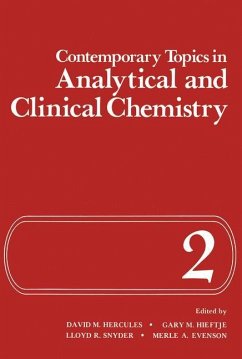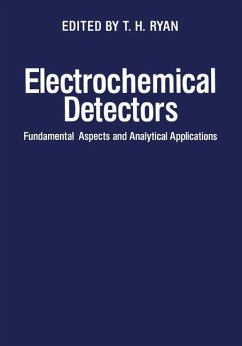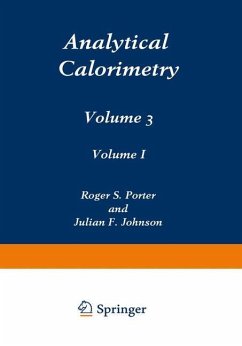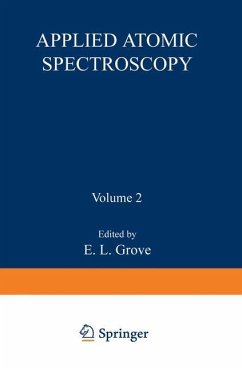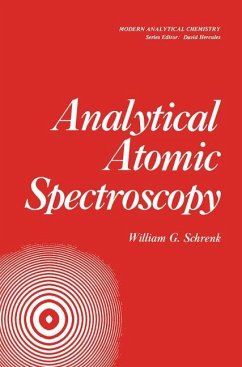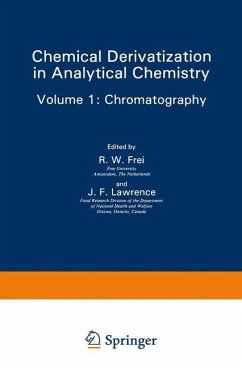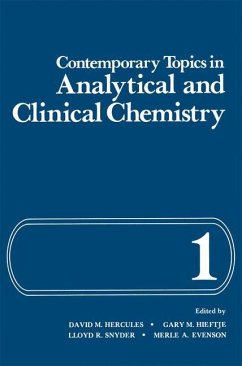
Contemporary Topics in Analytical and Clinical Chemistry
Volume 1
Herausgegeben: Hercules, David

PAYBACK Punkte
20 °P sammeln!
Any addition to the ever-expanding list of scientific publications requires careful consideration and justification. There are already numerous journals in analytical and clinical chemistry adequate for the publication of research results. There does remain a need for a series focused on analytical and clinical chemistry, to provide an overview of instrumental developments relevant to the needs of analytical and clinical chemists. This is the role intended for the present series. Although the title specifically indicates that the series will deal with analytical and clinical chemistry, our int...
Any addition to the ever-expanding list of scientific publications requires careful consideration and justification. There are already numerous journals in analytical and clinical chemistry adequate for the publication of research results. There does remain a need for a series focused on analytical and clinical chemistry, to provide an overview of instrumental developments relevant to the needs of analytical and clinical chemists. This is the role intended for the present series. Although the title specifically indicates that the series will deal with analytical and clinical chemistry, our intention is that it will deal with analytical chemistry as related to other areas, such as air and water pollution, oceanography, earth sciences, and various aspects of biomedical science and technology. It seems appropriate to publish two types of articles in the series. First, we will provide a forum for authoritative, critical reviews for the expert, to enable him to cope with the ever-growing problem of keeping abreast of rapid developments in his own and immediately related fields. In this way we hope the series will stimulate new ideas for research by being at the cutting edge of science. Second, we will publish articles written by experts in the fields being covered but primarily intended for the nonexpert, thereby providing him with some overview of the area.






